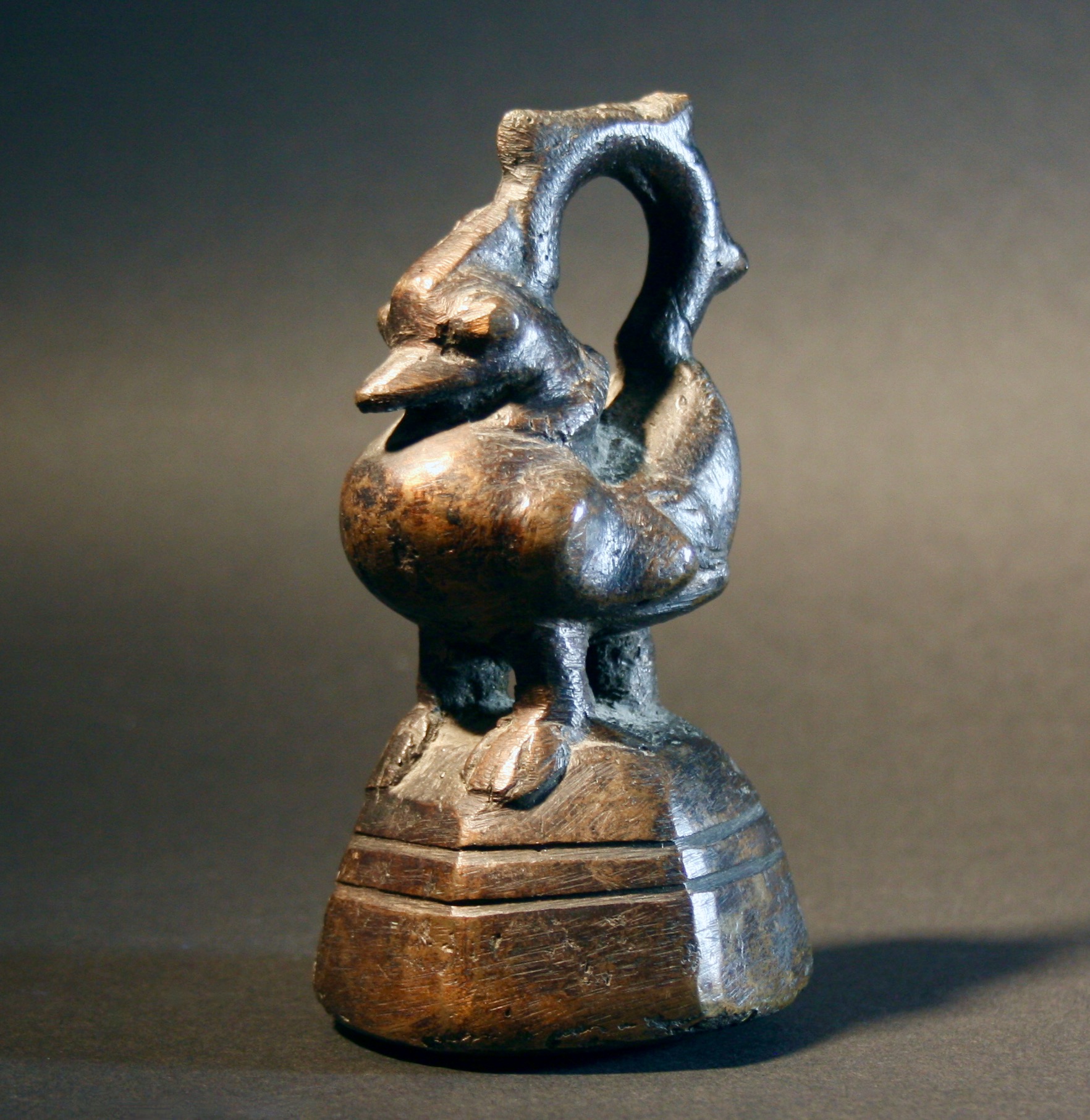

Title: 20th century Antique Large Tibetan Opium Wait Bronze Bird
Shipping: $29.00
Artist: N/A
Period: 20th Century
History: Art
Origin: Central Asia > China
Condition: Very Good
Item Date: N/A
Item ID: 540
Here's a fantastic example of an Antique Large Tibetan 20th-century Opium Weight Bronze Bird. This bird is part of a set that comes in different sizes and weights. It stands at a height of 4 1/8 inches with a wingspan of 2 1/4 inches. Antique opium weights have a fascinating history deeply rooted in the opium trade, particularly in regions like Southeast Asia and China during the 19th and early 20th centuries. These weights were used as a crucial tool in the opium market, serving both practical and cultural purposes. Opium Trade Context: Opium was a highly valuable and sought-after commodity, often traded between Western powers and countries like China. The opium trade was complex and had significant economic and social implications, leading to conflicts and wars. Practical Use: Opium weights were essential for merchants involved in the opium trade. They ensured accurate measurement and fair transactions. These weights were crafted with precision to counterbalance the opium being sold, guaranteeing standardized measurements. Artistic and Cultural Significance: Many antique opium weights were not merely utilitarian; they were crafted with intricate designs and artistic details. The weights often featured symbolic motifs, reflecting cultural and religious influences. Common themes included animals, mythical creatures, and traditional symbols. Materials and Craftsmanship: Opium weights were crafted from various materials such as bronze, brass, or other metals. The choice of material often depended on the region and the artisan's preferences. Skilled craftsmen put significant effort into creating detailed and aesthetically pleasing designs. Collector's Items: Today, antique opium weights are highly sought after by collectors and enthusiasts interested in Asian art and cultural artifacts. The uniqueness of each weight, coupled with its historical significance, adds to its value as a collector's item. Regulatory Changes: Changes in drug regulations and a shift away from the opium trade have altered the context and use of these weights over time. The historical significance of opium weights has transitioned from practical commerce to artifacts that provide insights into a bygone era. Understanding the history of antique opium weights involves delving into the intricate interplay of trade, culture, and craftsmanship during a pivotal period in global history.
The collectibility of antique bronze opium weights has experienced a surge in interest for several compelling reasons: Historical and Cultural Appeal: Antique opium weights serve as tangible relics from a bygone era, offering collectors a glimpse into the historical and cultural nuances of regions associated with the opium trade. The connection to a significant chapter in global history, marked by trade, conflicts, and cultural exchanges, enhances their appeal. Artistry and Craftsmanship: Opium weights often exhibit exquisite craftsmanship and intricate designs. Artisans of the time took care to create visually captivating pieces, featuring animals, mythological figures, and symbolic motifs. The artistic merit of these bronze weights adds an extra layer of fascination for collectors who appreciate fine craftsmanship. Symbolism and Meaning: Many opium weights carry symbolic significance tied to cultural beliefs and traditions. Collectors are drawn to the stories and meanings embedded in these symbols, creating a richer narrative around each piece. Limited Availability: As antiques, genuine bronze opium weights are finite in number. Their scarcity contributes to their allure among collectors seeking unique and rare artifacts for their collections. The passage of time and the historical context surrounding opium weights add to their limited availability. Investment Value: Some collectors view antique opium weights as not only culturally significant artifacts but also as potential investments. The rarity and historical value can contribute to the appreciation of their market worth over time. Diversity in Design: The diverse range of designs and shapes among opium weights provides collectors with a broad spectrum of choices. From animal motifs to intricate patterns, each piece offers a distinct visual appeal. Global Interest: The international nature of the opium trade has resulted in a global interest in these artifacts. Collectors from various parts of the world are drawn to opium weights as tangible links to shared historical experiences. Educational Value: Beyond their collectible nature, opium weights serve as educational tools, allowing collectors to delve into the complexities of historical trade, cultural practices, and the evolution of societies. In summary, the collectibility of antique bronze opium weights is driven by a convergence of historical, artistic, and cultural factors, making them prized additions to diverse collections.